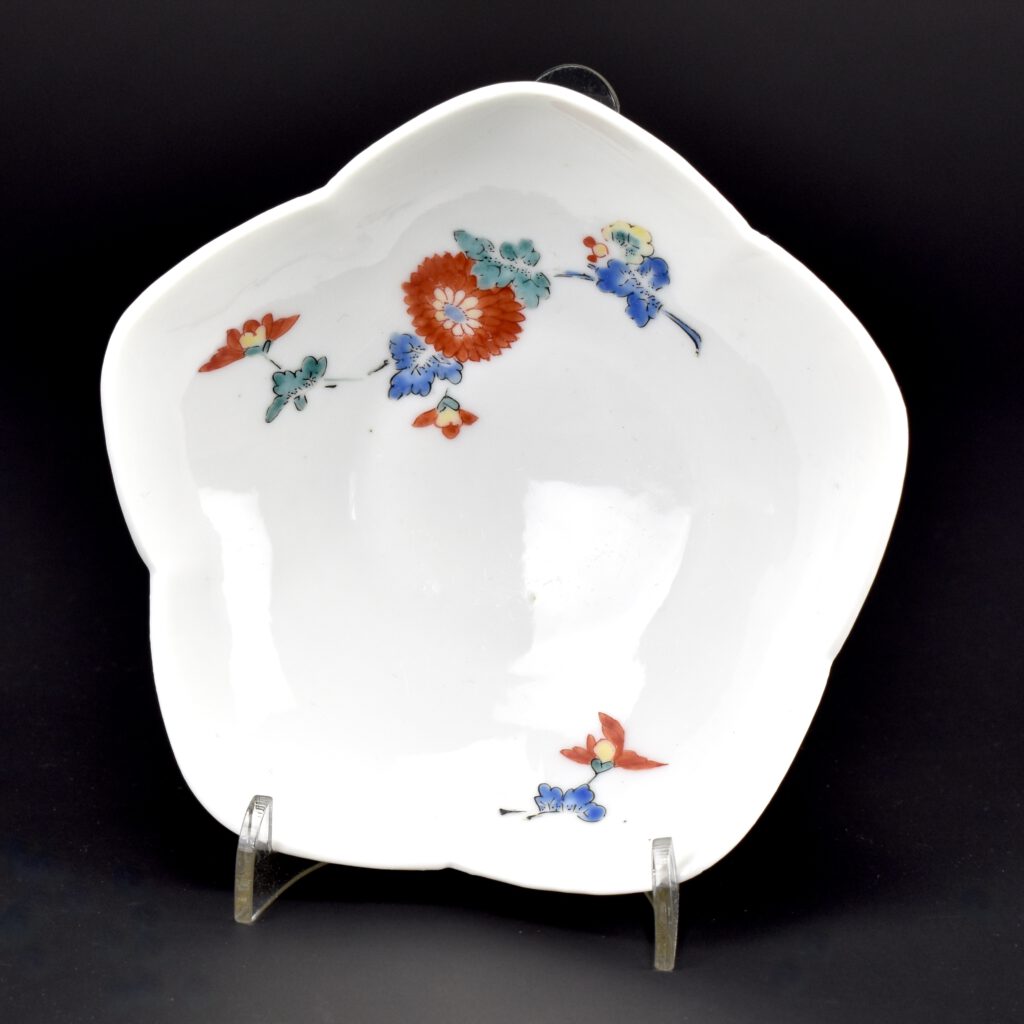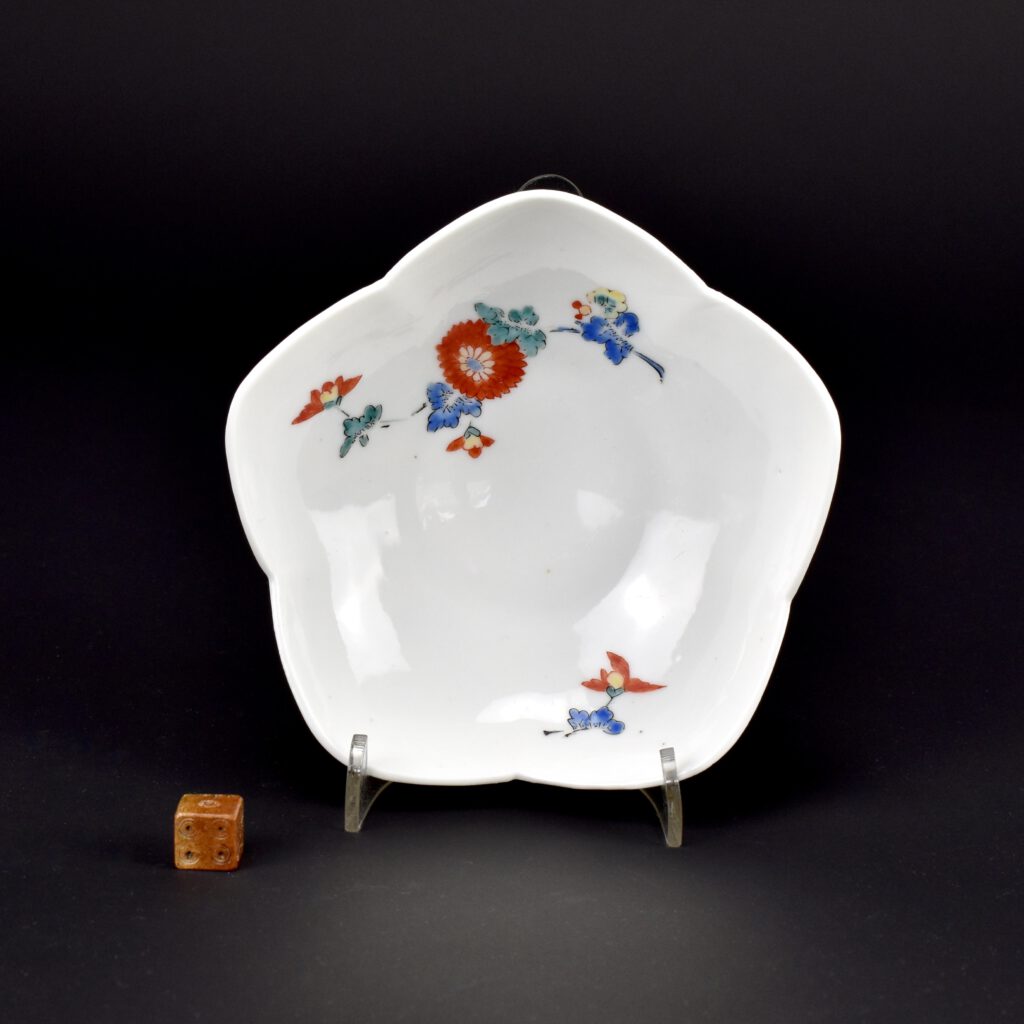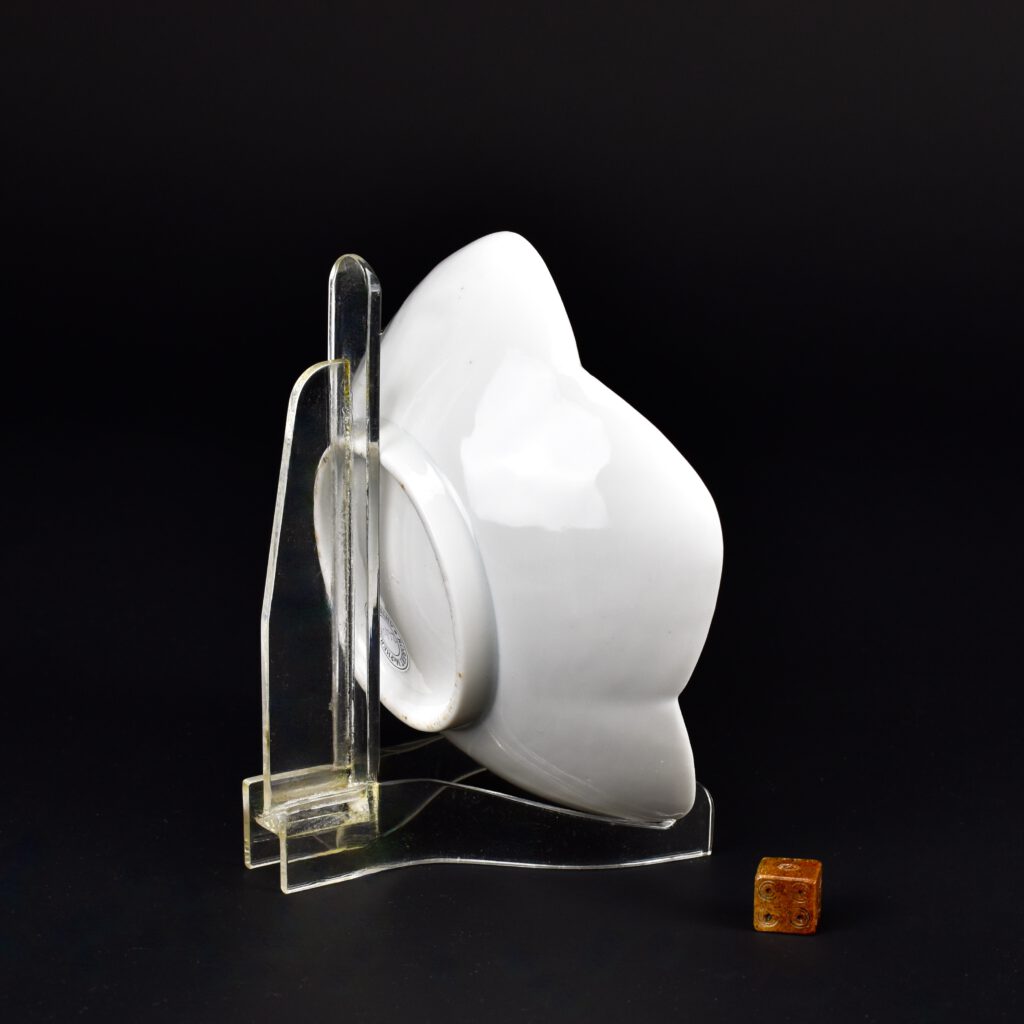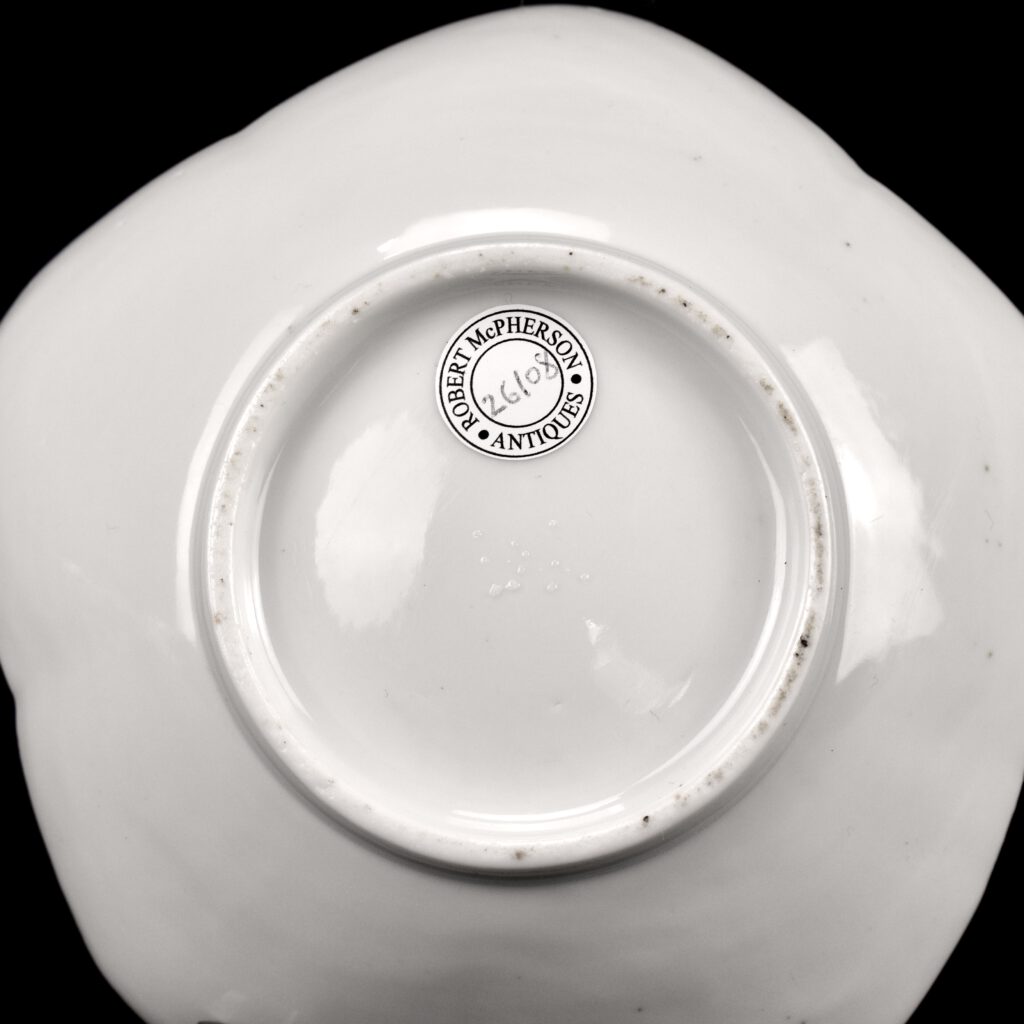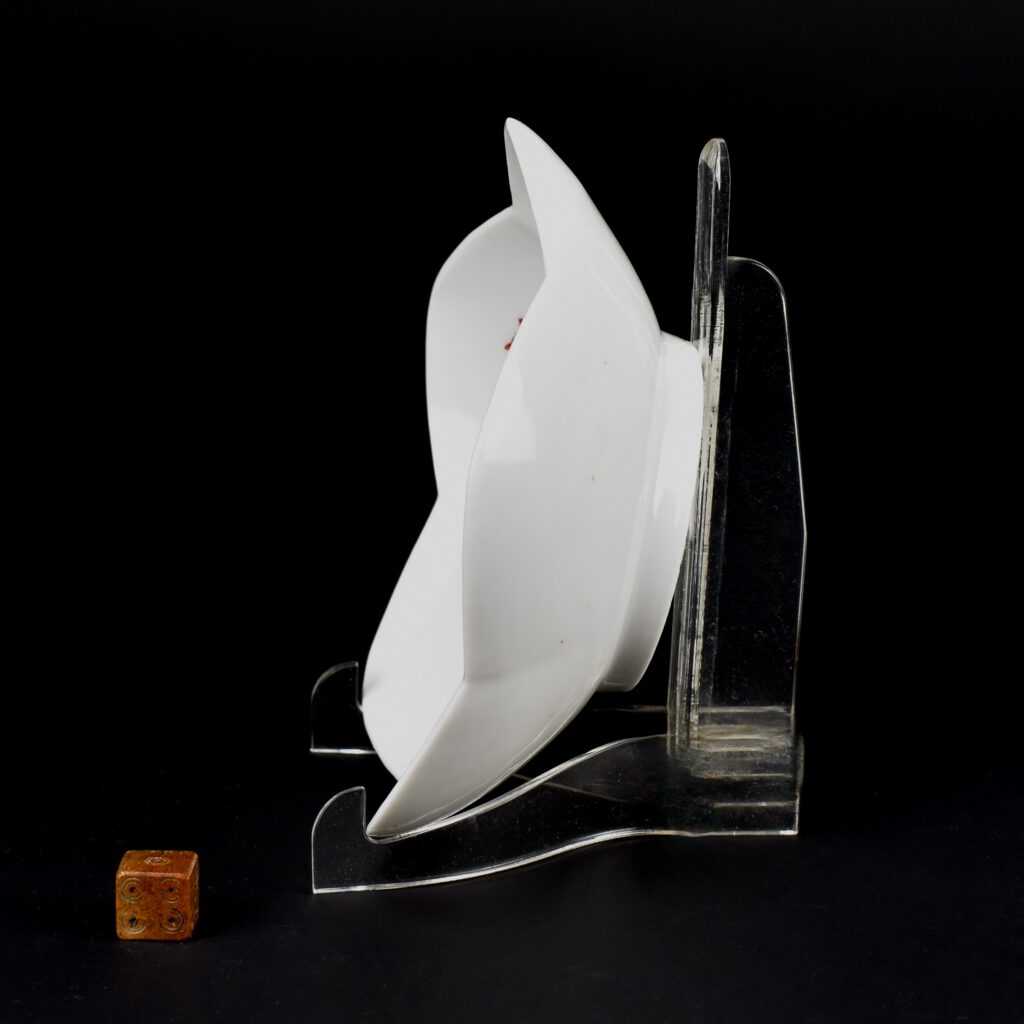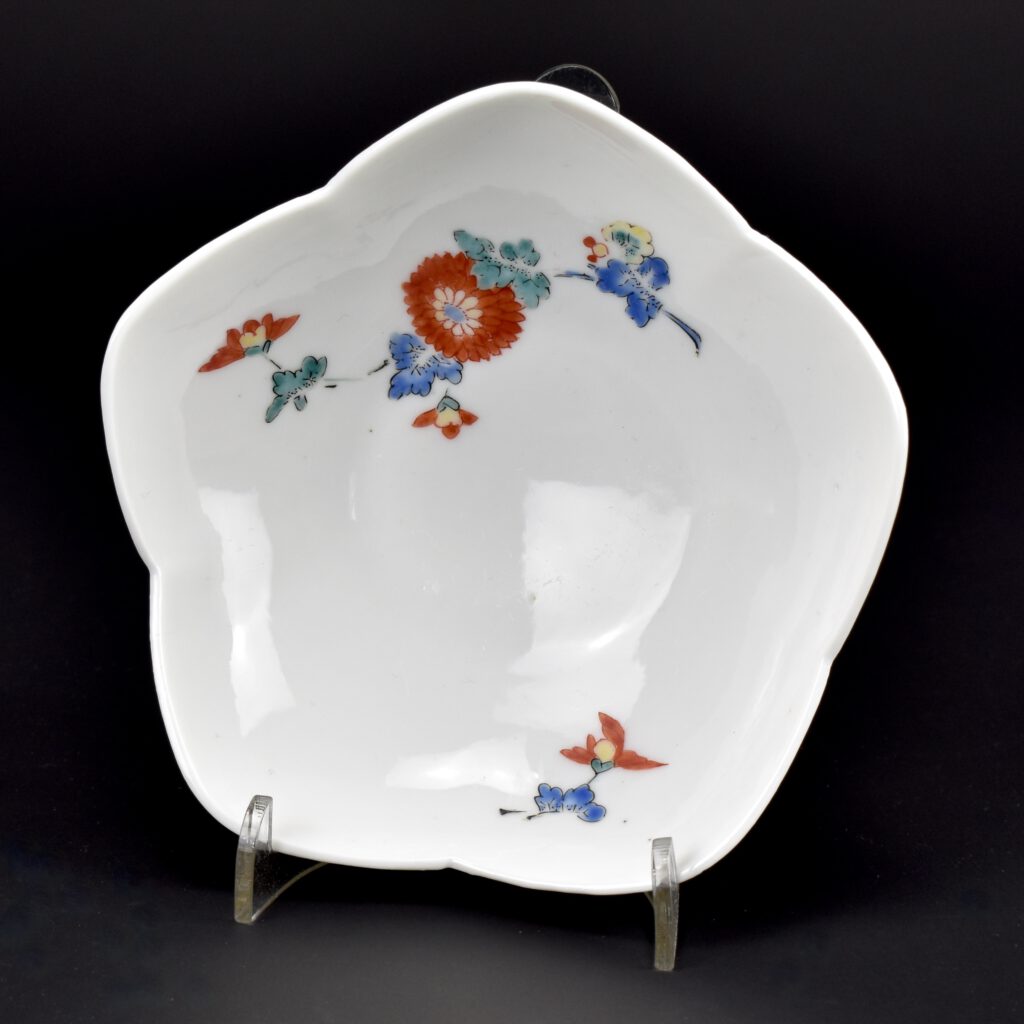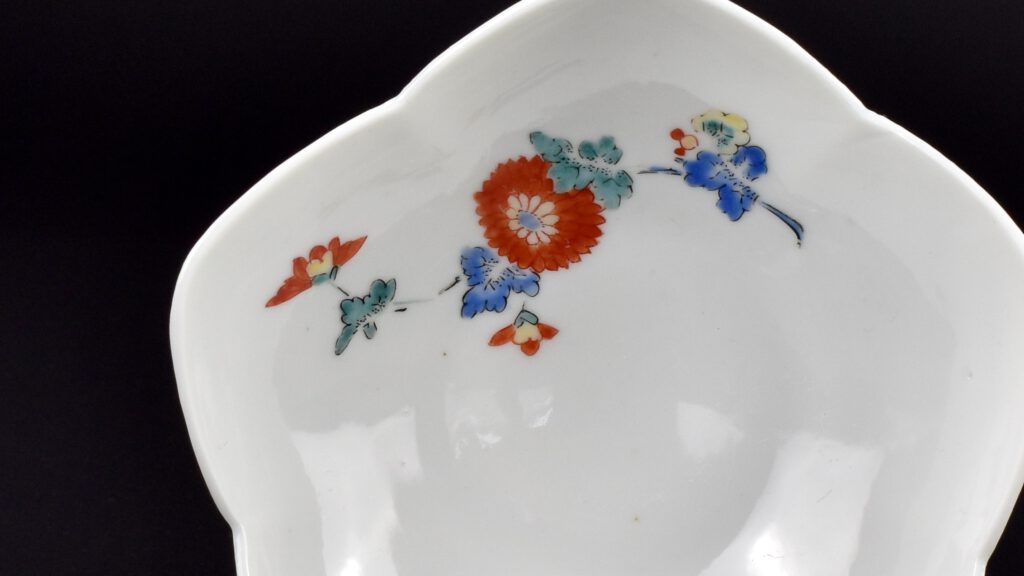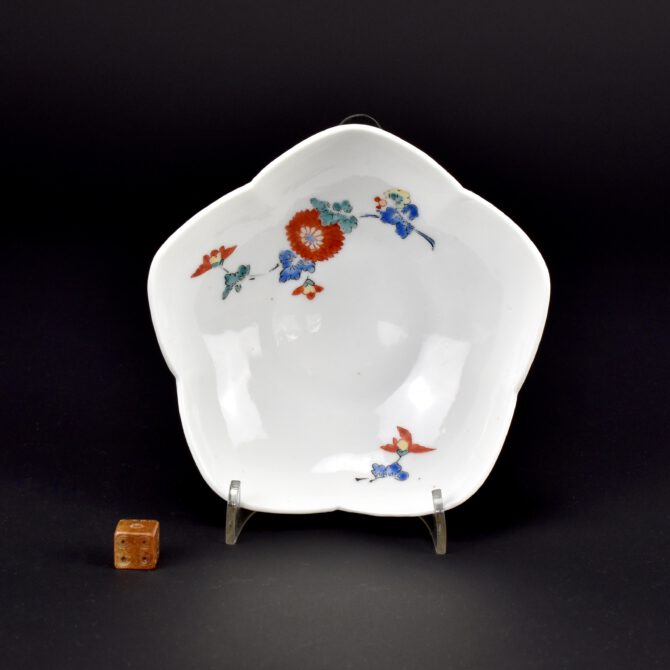
A 17th Century Japanese Kakiemon Porcelain Bowl
A 17th Century Japanese Kakiemon Porcelain Bowl. The shallow bellflower, called Kikyō, form has everted ‘petals’, it is painted using Kakiemon enamels with Chrysanthemum, the national flower of Japan.This understated subtle asymmetrical design is typically Japanese and is at its best on Kakiemon wares. The use of space shows off the pure white Nigoshide (milky white) porcelain to its full effect. Kakiemon decoration is usually of high quality, often delicate and with well-balanced asymmetric designs. These designs were normally quite sparse emphasizing the fine white porcelain known in Japan as Nigoshide (milky white porcelain). A Pair of Kakiemon Bowls of the Same Shape and Design, from Burghley House are illustrated in the catalogue : The Burghley Porcelains, An Exhibition from The Burghley House Collection and Based on the 1688 Inventory and 1690 Devonshire Schedule. See below the Photograph Gallery for one of the Burghley bowls and other references.
See below for more photographs and references.
SOLD
Kakiemon porcelain was decorated with a great variety of imaginative designs which include elements such many of which are well known in the West. Elements of these designs acquired European names early on. For example `banded hedge`, these are actually a brushwood fences, `flying squirrel`, these are tree shrews and the`Quail and Millet` design. The `Three Friends of Winter` were also a very popular group of designs, other subject taken from nature include flowers (especially the chrysanthemum, the national flower of Japan) as well as birds and rock-work. Figural subjects such as the `Hob in the Well` were also popular. This design illustrates a Chinese folk tale where a sage saves his friend who has fallen into a large fish-bowl by throwing stones at it, breaking open the pot. Banded-Hedges were a formal device within Japanese traditional gardens, they were often incorporated in designs, includes `The Three Friends of Winter` (Pine, Bamboo and Prunus). These three plants signify perseverance, as neither the pine nor the bamboo shed their leaves in winter and the plumb (Prunus) flowers at the very end of the winter, heralding the arrival of spring.
- Condition
- In perfect condition, some minute firing spects to the glaze.
- Size
- Diameter 12.6 cm (4 3/4 inches)
- Provenance
- An English private collection formed in the 1960s.
- Stock number
- 26108
Information
A Pair of Kakiemon Bowls of the Same Shape and Design, from Burghley House.
The Burghley Porcelains, An Exhibition from The Burghley House Collection and Based on the 1688 Inventory and 1690 Devonshire Schedule (Japan Society, New York, 1986. ISBN 0-913304-23-9). Page 249, item 104.

A Related 17th Century Kakiemon Bowl.
Robert McPherson Sold Archive 26068
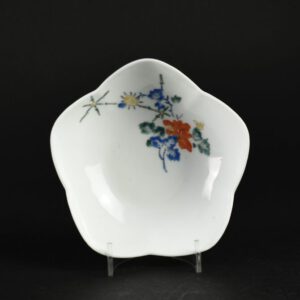
SOLD
Condition
In perfect condition, some minute firing spects to the glaze.
Size
Diameter 12.2 cm (4 3/4 inches)
Provenance
From a Private English Collection.
Stock number
26068
Kakiemon Porcelain
Kakiemon decoration is usually of high quality, often delicate and with well-balanced asymmetric designs. These designs were normally quite sparse emphasizing the fine white porcelain known in Japan as Nigoshide (milky white). The opaque white milky Nigoshide porcelain was used on the finest pieces, it appears that it was reserved for fine quality enamelled decoration and the secret of its production was guarded well. Kakiemon porcelain was decorated with a great variety of imaginative designs which include elements such many of which are well known in the West. Elements of these designs acquired European names early on. For example `banded hedge`, these are actually a brushwood fences, `flying squirrel`, these are tree shrews and the`Quail and Millet` design. The `Three Friends of Winter` were also a very popular group of designs, other subject taken from nature include flowers (especially the chrysanthemum, the national flower of Japan) as well as birds and rock-work. Figural subjects such as the `Hob in the Well` were also popular. This design illustrates a Chinese folk tale where a sage saves his friend who has fallen into a large fish-bowl by throwing stones at it, breaking open the pot. Banded-Hedges were a formal device within Japanese traditional gardens, they were often incorporated in designs, includes `The Three Friends of Winter` (Pine, Bamboo and Prunus). These three plants signify perseverance, as neither the pine nor the bamboo shed their leaves in winter and the plumb (Prunus) flowers at the very end of the winter, heralding the arrival of spring.
Nigoshide Body
The Nigoshide (milky white) body was a new whiter porcelain body introduced between about 1660 – 1680, solely for use on Kakiemon Wares. Indeed the Kakiemon Palette evolved at the same time. It has recently been proposed that the Nigoshide Body is not a new body at all, rather it is just made from a clay that has been levigated and washed more thoroughly.
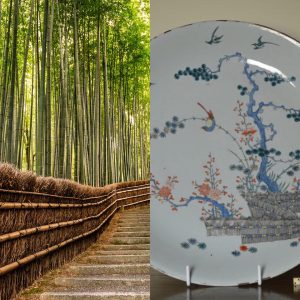
A Related 17th Century Kakiemon Bowl.
Robert McPherson Sold Archive 26068
